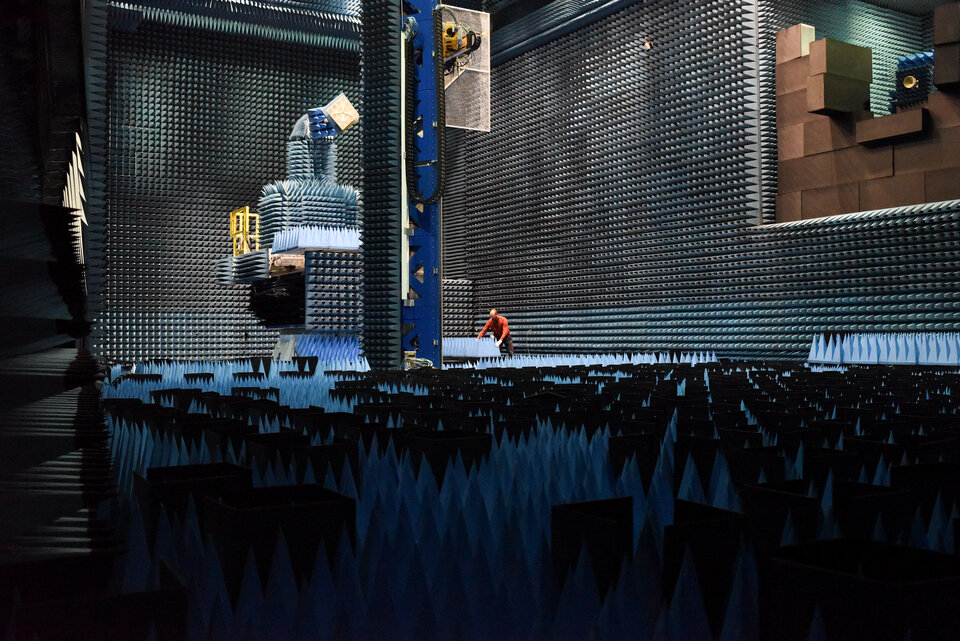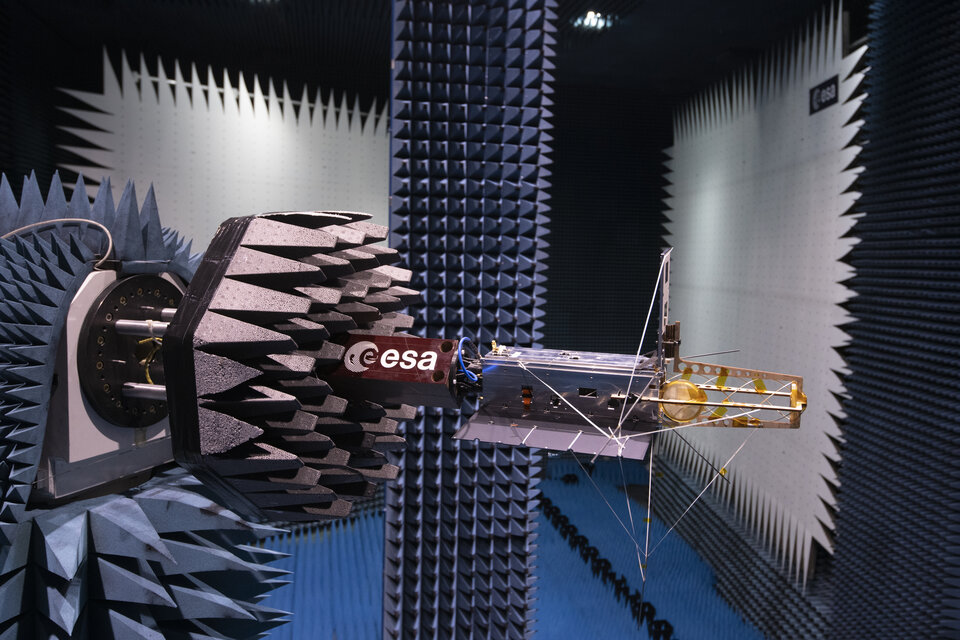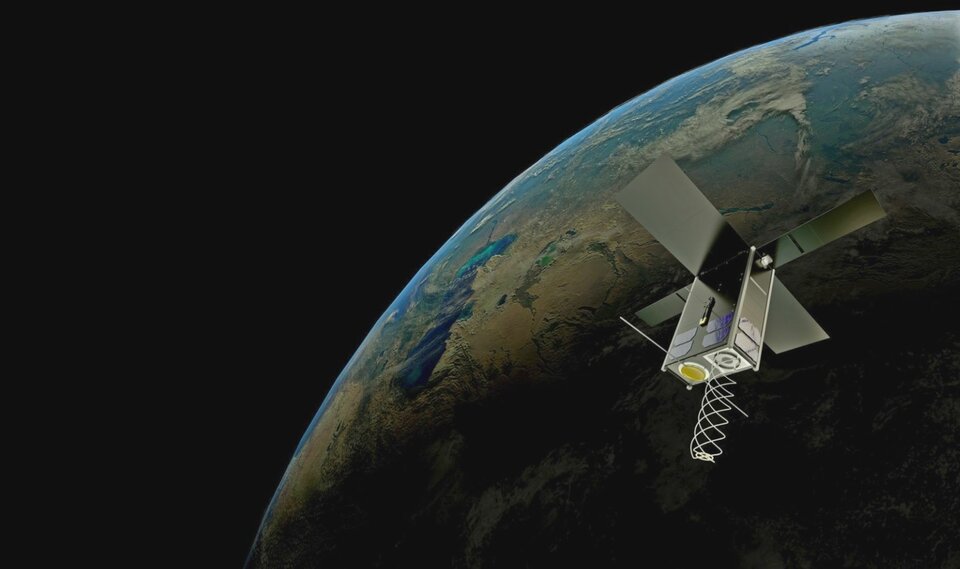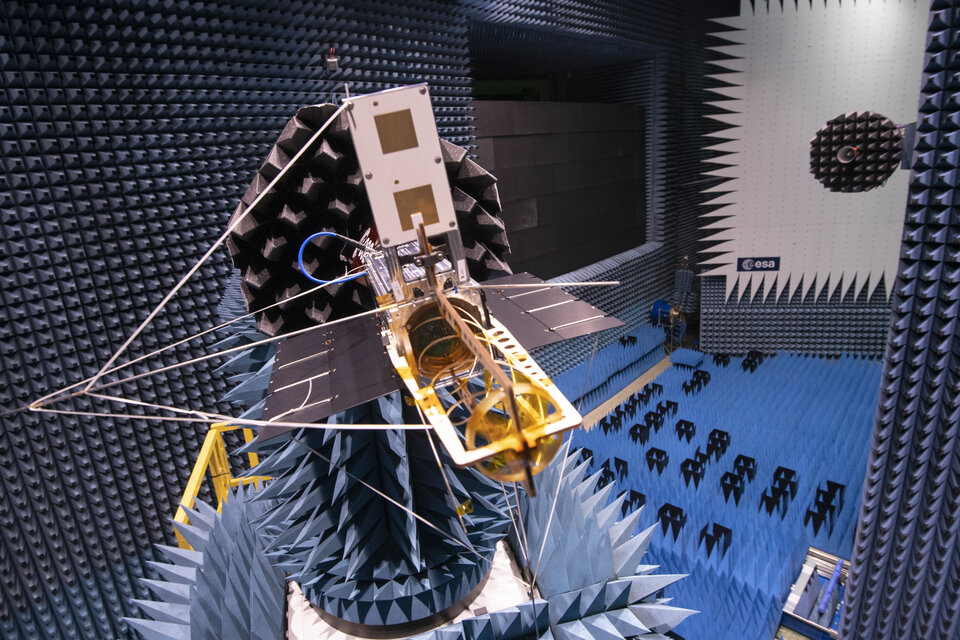29.05.2020

ESA’s largest antenna test facility remains operational despite the COVID-19 pandemic, performing pre-flight testing for the latest satellite in a constellation to serve the internet of things.

“The main change from a standard test campaign is that contact between people is being minimised, to fulfil social distancing requirements,” says antenna test engineer Eric Van Der Houwen.

“So the customers came here to mount their nanosatellite inside the chamber, then departed – normally they would stay around for the duration.
“And I’m working on my own in the facility for the most part, interacting remotely with my colleague Alfredo. When I do need help in person, for instance to check something, or shift a heavy item, then a colleague drops by: the pair of us wear masks throughout and keep our distance as much as possible.”

Antenna engineer Alfredo Catalani is overseeing Eric during the campaign: “I got stranded in Italy by the COVID-19 pandemic, but I’m able to work remotely just the same. I receive all test data for post-processing. Eric serves as my eyes, sending me photos of the test setup; if I need a different view angle I simply ask for it.
“We’re testing the performance of a total of six antennas aboard the nanosatellite, to validate that they will operate safely together in orbit. The company has supplied simulated antenna performance data, and our task is to compare this against the actual operation, and highlight any differences if they emerge.”

Dutch space company Hiber is building an orbital constellation of CubeSats – small modular satellites based around 10 cm units – to provide global low-cost connectivity for the ‘internet of things’, tracking and harnessing data from modem-linked objects such as haulage vehicles, power cables, pipelines or sensors for precision agriculture.
The HiberThree flight-model CubeSat, due to launch this summer, is being qualified for space inside ESA’s metal-walled Hybrid European Radio Frequency and Antenna Test Zone (Hertz) at the Agency’s ESTEC technical centre in the Netherlands, shut off from all external influences for radio testing.

Hertz’s hybrid nature makes it unique: the facility can assess radio signals from antennas either on a local ‘near-field’ basis or as if the signal has crossed thousands of kilometres of space, allowing it to serve all kinds of satellites and antenna systems.
Hiber is returning to Hertz, having previously used the facility last year. “We’re performing near-field measurements of this 30-cm-long CubeSat, with its various antennas in close proximity,” adds Alfredo.


Access the video
“The main UHF antenna – a self-deployable helix – for transmitting and receiving data to and from modems on the ground must operate well in conjunction with additional UHF and VHF antennas for ‘telemetry, telecommand and control’ signals to the satellite platform, and S-band patch antennas for data handling. An additional GPS receiver antenna will be fitted before launch.”
The company is called ‘Hiber’ because its terminals hibernate most of the time, turning on only when a Hiber satellite passes overhead to relay positioning and status updates. Hiber’s CubeSats are being manufactured for the company by Dutch small satellite specialist ISIS-Innovative Solutions In Space.
“I am glad that despite its Covid-19 measures ESTEC has had the flexibility to schedule and perform these tests,” comments Bert Meijvogel of the Netherlands Space Office. “This is an important pre-launch milestone for HiberThree, absolutely vital for predicting its internet of things service performance.”
Since its establishment in late 2016 Hiber has received support from various elements of ESA’s Advanced Research in Telecommunications Systems (ARTES) programme, helping it grow to be awarded the title of Commercial Startup Launch of 2018 by Amazon Web Services, and achieve its first satellite launch within a year of its founding.
Quelle: ESA
